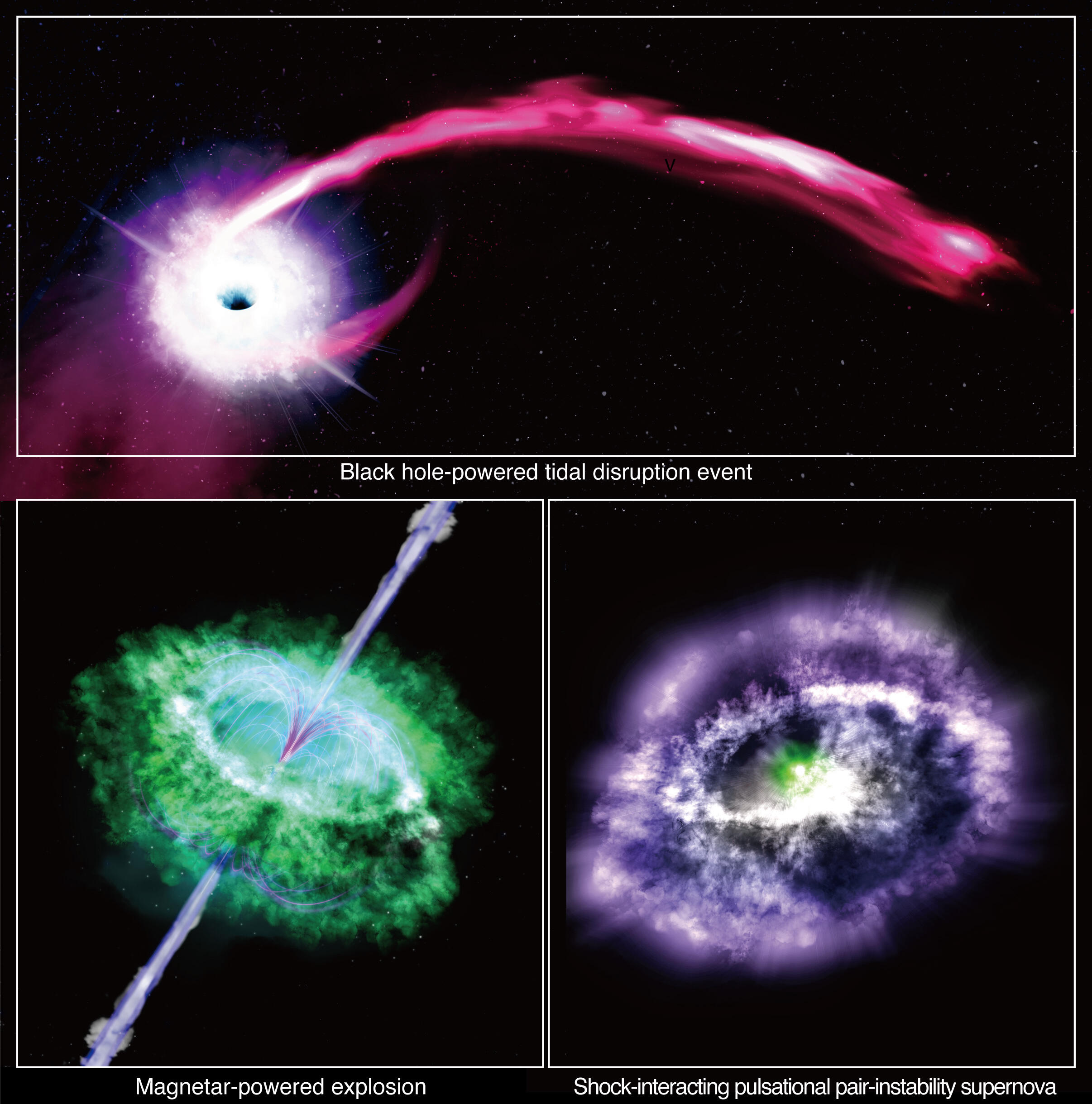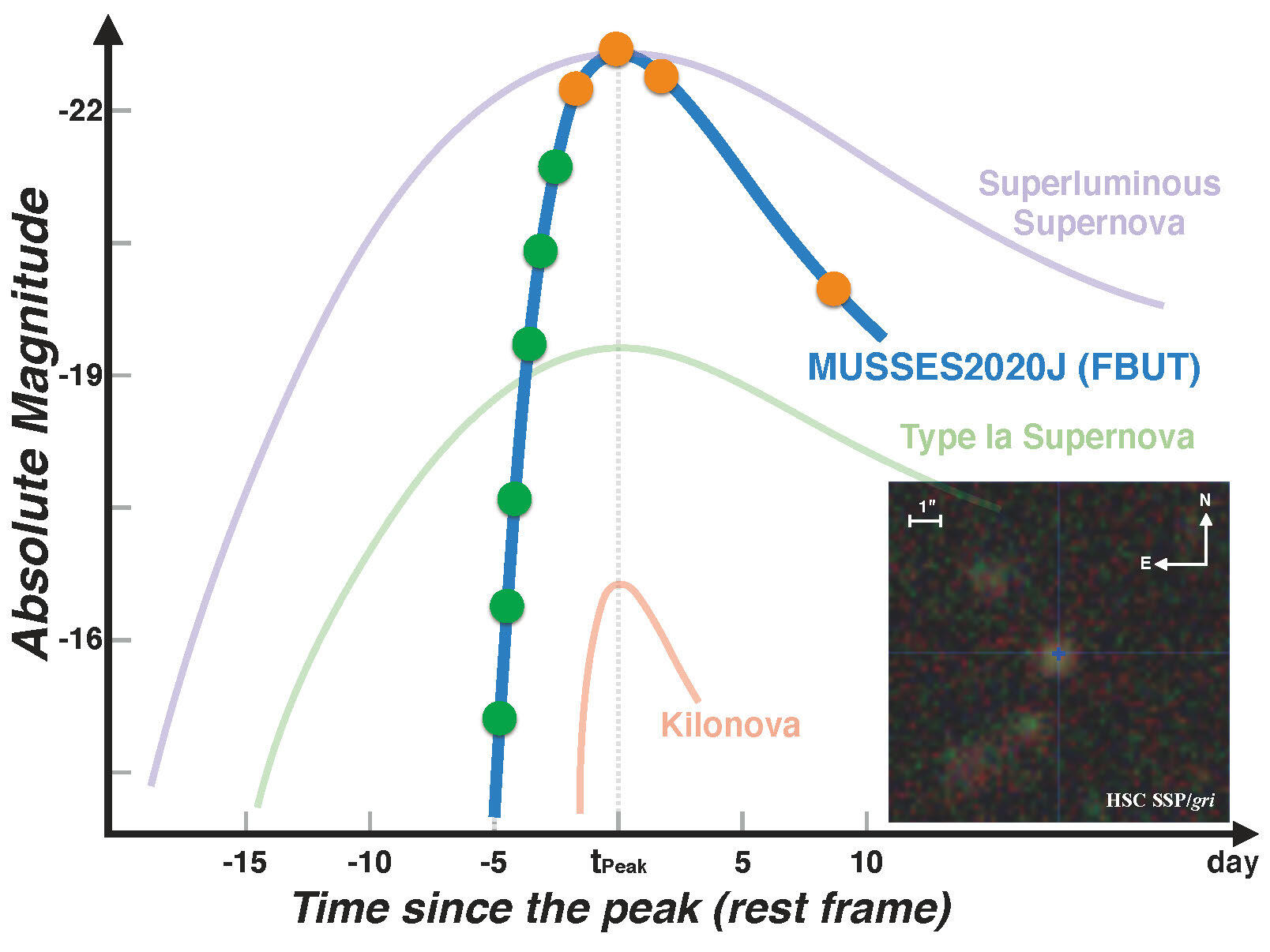Across many Asian cultures, there is a much-loved story of Tanabata: the Weaving Princess and the Cow Herder, a happy young couple in the heavens who are separated as punishment for neglecting their duties and only allowed to meet one night each year. Every summer there are festivals to celebrate this short but joyous reunion. This Tanabata season, astronomers announced a different kind of brief cosmic encounter, even complete with references to a "cow".

Figure 1: Artist’s impression of possible origins of the fast, high-energy event MUSSES2020J. (Credit: Kavli IPMU, University of Tokyo)
The Subaru Telescope’s wide field-of-view and high sensitivity combined with Big Data techniques have made it possible to search wide areas of the heavens, looking for transient phenomena which change rapidly with time. Dr. Ji-an Jiang, at the National Astronomical Observatory of Japan (formerly at the Kavli Institute for the Physics and Mathematics of the Universe), is leading the "MUltiband Subaru Survey for Early-phase Supernovae" (MUSSES) project to look for fast-evolving transients within one day of their occurrence. The team has discovered 20 fast-evolving transients in December 2020, and one of them, MUSSES2020J (AT 2020afay), caught Jiang's attention.
MUSSES2020J was very dim in the first images but brightened significantly over the course of the observations, indicating that the team caught it at the very beginning of its occurrence. Follow-up observations confirmed that this event evolved much faster than normal supernovae and about 50 times brighter. Astronomers still don’t know what could cause this kind of event. Only a handful of others have ever been observed, the most famous being AT 2018cow. The team proposes calling this new class of events "Fast Blue Ultraluminous Transients" (FBUT).

Figure 2: The schematic light curves of MUSSES2020J and other typical energetic transients. Green and orange points denote the stages that MUSSES2020J was observed by the Subaru Telescope and follow-up telescopes, respectively. HSC, g, r, and i composite multicolor thumbnail image of the host galaxy is shown in the bottom-right corner. A blue cross indicates the location of MUSSES2020J, which is almost at the nucleus of the host galaxy. (Credit: Kavli IPMU, University of Tokyo)
MUSSES2020J was caught earlier in its evolution than any other FBUTs. "Thanks to the high-cadence survey mode and the excellent performance of Subaru/HSC, we were able to perfectly catch this amazing phenomenon for the first time. The early light-curve information should bring some unique information to understand the origin of these amazing transients," comments Jiang.
Due to the suddenness and power of FBUTs, astronomers suspect that a compact object like a black hole or neutron star is involved, but exactly what happens and how remains a mystery. The team will continue searching for the answers, but this brief encounter with a mysterious heavenly phenomenon has left the astronomers as happy as the reunited Weaving Princess and Cow Herder.
These results appeared as, Jiang et al. "MUSSES2020J: The Earliest Discovery of a Fast Blue Ultraluminous Transient at Redshift 1.063" in The Astrophysical Journal Letters on July 12, 2022.
The Subaru Telescope is a large optical-infrared telescope operated by the National Astronomical Observatory of Japan, National Institutes of Natural Sciences with the support of the MEXT Project to Promote Large Scientific Frontiers. We are honored and grateful for the opportunity of observing the Universe from Maunakea, which has cultural, historical, and natural significance in Hawai`i.


